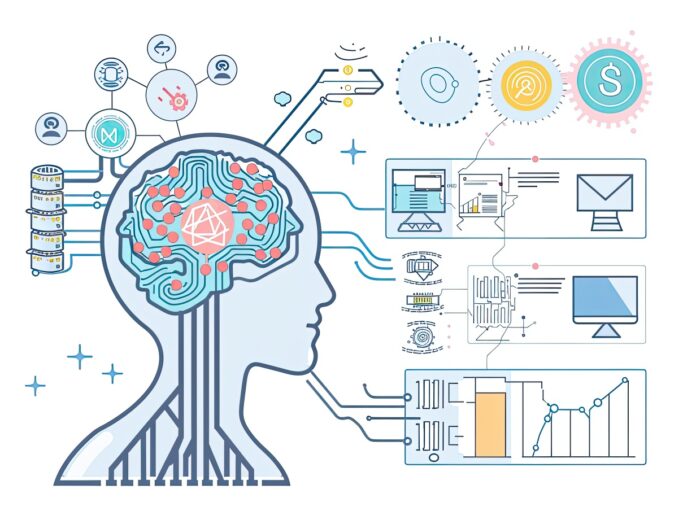Introduction to Machine Learning
Machine Learning (ML) is a subset of artificial intelligence (AI) that focuses on developing algorithms that enable computers to learn from and make decisions based on data. Unlike traditional programming, where a computer is explicitly programmed to perform a task, machine learning allows computers to learn from data, identify patterns, and make decisions with minimal human intervention. This post aims to introduce the fundamental concepts of machine learning, its importance, key algorithms, and real-world applications.
What is Machine Learning?
Machine learning involves training algorithms to recognize patterns in data and make predictions or decisions based on that data. The more data an algorithm processes, the more accurate its predictions and decisions become. There are three primary types of machine learning:
- Supervised Learning: In supervised learning, the algorithm is trained on labeled data, meaning the input data is paired with the correct output. The goal is to learn a mapping from inputs to outputs that can be used to make predictions on new, unseen data.
- Examples: Email spam detection, image classification, and predictive text input.
- Unsupervised Learning: Unsupervised learning involves training algorithms on data without labeled responses. The goal is to find hidden patterns or intrinsic structures in the input data.
- Examples: Customer segmentation, anomaly detection, and recommendation systems.
- Reinforcement Learning: In reinforcement learning, an agent learns to make decisions by performing actions and receiving rewards or penalties. The agent aims to maximize cumulative rewards over time.
- Examples: Game playing, robotic control, and automated trading systems.
Key Machine Learning Algorithms
Machine learning algorithms can be broadly categorized into several types based on their learning style and the type of problem they solve. Here are some of the most commonly used algorithms:
- Linear Regression: Used for predicting a continuous value, linear regression models the relationship between a dependent variable and one or more independent variables.
- Logistic Regression: Used for binary classification problems, logistic regression models the probability of a binary outcome based on one or more independent variables.
- Decision Trees: Decision trees split the data into branches based on feature values, making decisions at each node to classify or predict the target variable.
- Random Forest: An ensemble method that combines multiple decision trees to improve accuracy and prevent overfitting.
- Support Vector Machines (SVM): SVMs find the hyperplane that best separates data into different classes, maximizing the margin between the classes.
- k-Nearest Neighbors (k-NN): A simple, instance-based learning algorithm that classifies new data points based on the majority class of their nearest neighbors.
- Neural Networks: Modeled after the human brain, neural networks consist of interconnected nodes (neurons) that process data in layers, making them powerful for complex pattern recognition.
- Clustering Algorithms: Algorithms like k-means and hierarchical clustering group similar data points together, useful for unsupervised learning tasks.

Applications of Machine Learning
Machine learning has a wide range of applications across various industries. Some notable examples include:
- Healthcare: Machine learning is used for disease diagnosis, personalized treatment plans, and drug discovery. For instance, algorithms can analyze medical images to detect tumors or predict patient outcomes based on historical data.
- Finance: In the financial sector, machine learning algorithms are used for fraud detection, credit scoring, and algorithmic trading. These algorithms analyze transaction patterns to identify anomalies and make real-time trading decisions.
- Marketing: Marketers use machine learning for customer segmentation, personalized recommendations, and sentiment analysis. By analyzing customer behavior, businesses can tailor their marketing strategies to individual preferences.
- Automotive: Machine learning is a core technology behind self-driving cars, enabling vehicles to recognize objects, navigate routes, and make driving decisions. Companies like Tesla and Waymo are at the forefront of this innovation.
- Retail: Retailers leverage machine learning for inventory management, demand forecasting, and customer service. Algorithms help predict product demand and optimize stock levels, while chatbots provide personalized customer support.
- Entertainment: Streaming services like Netflix and Spotify use machine learning to recommend content based on user preferences and viewing history, enhancing user engagement and satisfaction.
Challenges in Machine Learning
Despite its transformative potential, machine learning faces several challenges that need to be addressed:
- Data Quality: High-quality, relevant data is crucial for training accurate models. Data cleaning and preprocessing are essential steps to ensure the reliability of machine learning algorithms.
- Bias and Fairness: Ensuring that machine learning models are unbiased and fair is a significant concern. Bias in training data can lead to unfair or discriminatory outcomes, necessitating careful monitoring and mitigation.
- Explainability: Many machine learning models, especially deep learning algorithms, are often considered “black boxes” due to their complexity. Improving the interpretability and explainability of these models is important for trust and accountability.
- Scalability: Machine learning models need to be scalable to handle large volumes of data and provide real-time predictions. Efficient algorithms and powerful computing resources are necessary to achieve this.
- Privacy and Security: Protecting sensitive data and ensuring the security of machine learning systems are critical concerns. Techniques like differential privacy and secure multi-party computation are being explored to address these issues.
Future of Machine Learning
The future of machine learning is incredibly promising, with ongoing advancements expected to drive further innovation. Key trends to watch include:
- Automated Machine Learning (AutoML): AutoML aims to automate the end-to-end process of applying machine learning, making it more accessible to non-experts. Tools like Google AutoML and H2O.ai are leading this movement.
- Edge AI: Bringing machine learning to edge devices, such as smartphones and IoT devices, enables real-time data processing and decision-making. This reduces latency and enhances privacy by keeping data local.
- Quantum Machine Learning: The integration of quantum computing with machine learning has the potential to solve complex problems faster than classical computers. This emerging field is expected to revolutionize industries with its computational power.
- Ethical AI: As machine learning becomes more pervasive, ensuring ethical practices in AI development and deployment will be crucial. Frameworks and guidelines for responsible AI use will shape the future landscape.
Conclusion
Machine learning is a cornerstone of modern AI, driving innovations across diverse sectors. Understanding its principles, algorithms, and applications is essential for leveraging its full potential. As we continue to explore this fascinating field, staying informed about the latest developments and addressing emerging challenges will be key to harnessing the power of machine learning responsibly.
Useful Links:
- Introduction to Machine Learning by Stanford University
- Machine Learning Crash Course by Google
- Understanding Machine Learning by MIT



